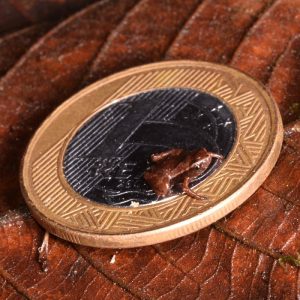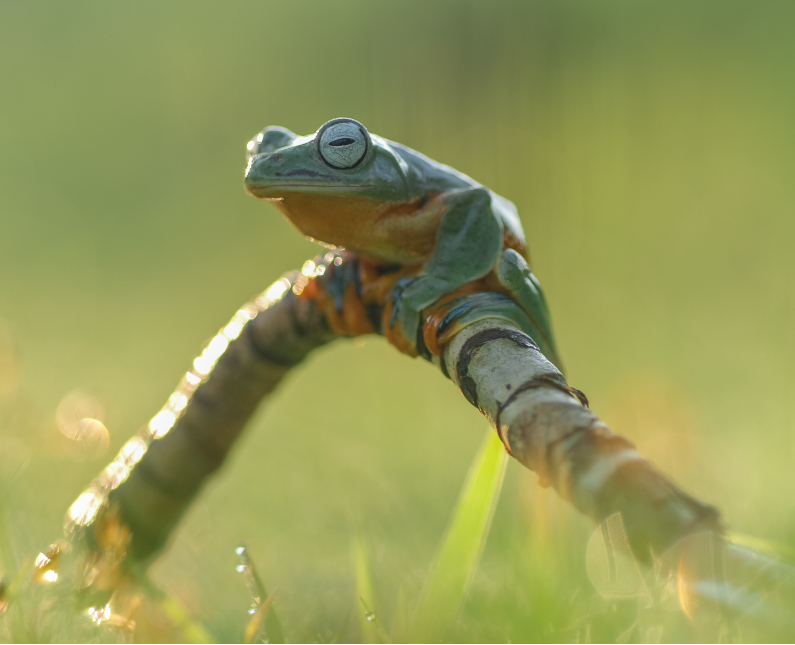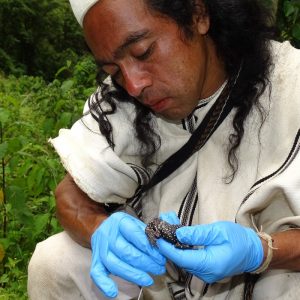The Mohamed bin Zayed Species Conservation Fund (MBZF) is reaffirming its dedication to amphibian conservation worldwide, recognising the role of frogs, salamanders and caecilians as keystone species and vital indicators of ecosystem health. Amphibians serve as both predator and prey, transferring massive amounts of energy within ecosystems, and helping to control insect populations that damage crops and transmit diseases. As sentinel species, they are highly sensitive to environmental changes, making them crucial barometers of ecosystem stability. When frogs and other amphibian species are in trouble, it is a warning sign that the entire ecosystem is in danger.
“Over the past 15 years, the MBZ Fund has provided 280 grants totaling more than $2.2m to support the conservation of threatened amphibian species worldwide. Amphibians are an ancient lineage of species, which often occupy a very restricted habitat niche and range. This makes them particularly vulnerable, but also means that small grants can be directly impactful” said Nicolas Heard, Acting Director General of the Mohamed bin Zayed Species Conservation Fund.
In 2023, The State of the World’s Amphibians (Re:wild et al., 2023) was publish to summarize the main findings of the Second Global Amphibian Assessment – GAA-2 (Luedtke et al., 2023). This study revealed that, with more than 8,700 described species worldwide, amphibians are the second most threatened taxonomic group and the most threatened vertebrate class globally, with increasing threats such as habitat loss, climate change and disease leading to rapid status deterioration over the past four decades. Sadly, amphibians are in dire need of protection, with 40.7% of the species globally threatened with extinction (Luedtke et al., 2023) *.
Amphibians not only signal early signs of ecosystem imbalance, but they also hold cultural significance in some communities. An example of this is seen through an MBZF-supported project in Colombia.
“Gouna,” as the indigenous Achuaco community of Sogrome, Colombia, calls the sacred Starry Night Harlequin Toad (Atelopus arsyecue), was thought to be extinct for 30 years until members of the community alerted scientists to its existence. The Sogrome community has a deep bond with these amphibians, regarding them as guardians of water and symbols of fertility. For generations, the Arhuaco people have listened to the toads singing as guidance on when to plant crops or perform spiritual ceremonies.
At the Mohamed bin Zayed Species Conservation Fund, our commitment extends beyond supporting organisations; we empower individuals, particularly those beginning their conservation journeys. Additionally, we back projects of all scales, ensuring a wide-reaching impact on species conservation. One such grant recipient is Wendy Bolaños, a master’s student at the State University of Santa Cruz, who studied the Flea frog (Brachycephalus pulex) in Bahia, Brazil. As part of her research, she measured and identified 46 specimens. Surprisingly, the smallest adult male measured just 6.45 mm, earning the title as the world’s smallest amphibian.
 “Investigating the conservation of a species teaches us to understand that all organisms play a role in the ecosystem; and as a woman dedicated to science, I am honoured to have the ability, responsibility, and above all, support from institutions that understand the importance of studying, preserving, and raising awareness about our nature. Funding for small projects often becomes the starting point for the development of large-scale projects, and it is these small opportunities that, in my case, led me to carry out beautiful work on a frog that ultimately became the smallest of the amphibians known so far. These kinds of results become even greater motivation, leading me to continue striving to encompass new objectives in my daily life.” Wendy Bolaños
“Investigating the conservation of a species teaches us to understand that all organisms play a role in the ecosystem; and as a woman dedicated to science, I am honoured to have the ability, responsibility, and above all, support from institutions that understand the importance of studying, preserving, and raising awareness about our nature. Funding for small projects often becomes the starting point for the development of large-scale projects, and it is these small opportunities that, in my case, led me to carry out beautiful work on a frog that ultimately became the smallest of the amphibians known so far. These kinds of results become even greater motivation, leading me to continue striving to encompass new objectives in my daily life.” Wendy Bolaños
Biological diversity is being lost as species face extinction, making new discoveries critical as they offer a second chance at species survival. One such project involved the discovery of a new species in the Hylidae family, in a single wetland in Northern Costa Rica. At the time of application in 2022, the taxonomy of the species was unknown, but later, the species was named Tlalocohyla celeste. MBZF played a key role in the development of Tlaloc Conservation within Costa Rica Wildlife Foundation to preserve the only known population of this species.
These projects are just some of the 280 amphibian grants we have supported over the past 15 years, reflecting our commitment to both species’ conservation and the dedicated individuals and organisations working tirelessly to protect them.
Protecting amphibians is essential for maintaining ecological balance and ensuring the sustainability of our natural world. Let us continue our efforts to safeguard these vital creatures and the ecosystems they inhabit.
* https://www.nature.com/articles/s41586-023-06578-4
* https://nc.iucnredlist.org/redlist/resources/files/1696400756-SOTWA_GAA2_04Oct2023.pdf



